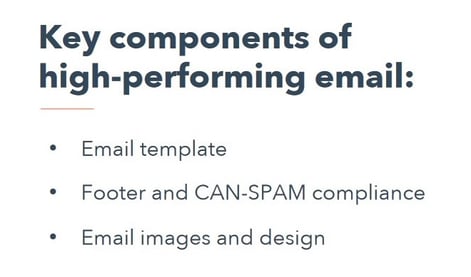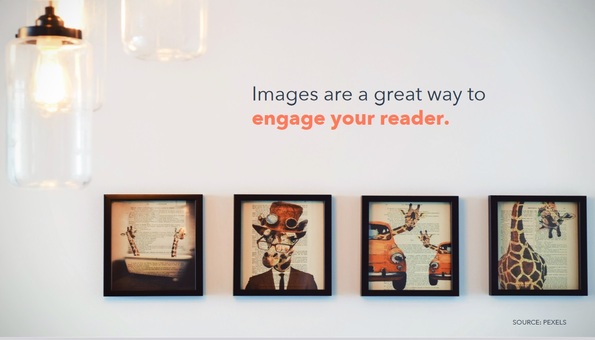Email Marketing for Success
- Home
- Email Marketing for Success
Identifying the Right Audience for Your Email

Want to craft emails that actually get opened and read? Step one is a digital marketing fundamental: know your audience. You need to understand who they are and when they're most likely to engage with your content. Timing is everything, people.
Understanding Customer Personas for Targeted Emailing
To create effective email campaigns, you need to know your customers inside and out. That's where buyer personas come in. By dividing your customers based on their interests, habits, and characteristics, you can deliver messages that are pertinent to them. It's like magic but with fewer rabbits.
- Demographics: Age, gender, location - all the juicy details that help you tailor your tone and language.
- Purchasing Behavior: What makes your customers tick? Knowing their triggers can inform your promotional strategies.
- Lifestyle Preferences: Hobbies, interests, and other personal details can make your content more relatable and engaging.
Determining Optimal Send Times for Maximum Engagement
Timing is everything, especially when it comes to email. You want to send your message when your audience is most likely to be online and paying attention. Try sending emails at different times and days to identify the best timing for your business. Once you've identified the ideal time to send your messages, keep at it. Consistency is key.
For more tips on crafting killer emails, check out Hubspot's email marketing guide.
Optimizing Subject Lines with A/B Testing

Your email subject line is like a digital handshake - it can either invite readers in or turn them away. That's why it's crucial to optimize it for maximum impact. A proven strategy for this is A/B testing.
A/B testing involves creating two different versions of a subject line and sending each version to a small segment of your target audience. By comparing open rates, click-through rates, and conversion rates between the two variants, you can identify which one drives more engagement and action.
The Power of A/B Testing
A/B testing allows you to understand what type of messaging resonates better with your audience. It helps you identify which subject line variant drives more engagement and action.
Creating Effective Test Variables
To conduct an effective A/B test, identify elements that could influence how recipients perceive your emails. These might include tone, length, personalization level, use of punctuation and emojis, and more.
- Tone: Does a formal tone work better than a casual one? Or vice versa?
- Length: Do short punchy lines get more opens than longer ones?
- Personalization: Does including the recipient's name increase engagement?
- Punctuation & Emojis: How do punctuation marks or emojis affect open rates?
Making Data-Driven Decisions
Data collected from A/B tests provide valuable insights into customer behavior and preferences. Check out Optimizely for more information on A/B testing.
Why Sender Information in Emails Matters
In the world of email marketing, every detail counts. One often overlooked aspect is sender information - the name and email address that appears in your recipient's inbox. This small detail can significantly impact whether someone opens an email or not.
The sender's information should strike a balance between professionalism and approachability. It needs to be consistent across all communication channels to build trust with your audience.
Choosing the Right Sender Name
With the sender's name being one of the primary factors in determining whether or not an email is opened, it's essential to select a suitable one that will resonate with your audience and foster trust. A study by Campaign Monitor found that 68% of Americans decide to open emails based on who they're from.
To choose a suitable sender name, consider these tips:
- Use a real person's name: People are more likely to engage with emails sent by individuals rather than faceless corporations.
- Avoid generic names: Names like "admin" or "support" may come off as impersonal and uninviting.
- Maintain consistency: Changing your sender name frequently can confuse recipients and lead them to ignore your emails or mark them as spam.
Selecting an Appropriate Email Address
The same principles apply when choosing an appropriate sending email address for your company's outbound communications. Here are some points worth considering:
- No "no-reply" addresses: "No-reply@" addresses discourage engagement and could harm deliverability rates according to SendGrid.
Making it Relevant & Consistent
Your business domain should ideally match the content of your message, making it relevant for receivers while maintaining brand consistency throughout all communication channels.
In conclusion, having professional yet approachable sender information helps create trust among readers leading to higher open rates which eventually drive conversions.
Writing Effective Email Copy

The power of email marketing lies in its ability to convey a message directly to the recipient. However, crafting effective email copy is not a walk in the park. It requires strategic thinking and creativity.
Clarity over complexity - simplicity wins in email marketing
People today seek out clear and succinct data in the ever-quickening world. Overloading your emails with complex jargon can confuse your audience and deter them from reading further. Instead, use simple language that resonates with your target audience.
- Be direct: State your point clearly at the beginning of the email.
- Avoid fluff: Keep sentences short and meaningful.
- User-friendly format: Use bullet points or numbered lists for easy readability.
Purpose-driven writing - aligning text with business goals
Your emails should serve a purpose beyond just sharing information; they should drive action toward achieving business goals. Whether you're promoting a product or nurturing leads, every word must contribute towards this goal. Here are some examples.
- Action-oriented language: Create urgency by using phrases like "limited time offer" or "sign up now". This encourages readers to take immediate action after reading the email.
To sum up, creating high-performing emails involves understanding your buyer persona, their needs, timing, and content delivery. Apply these principles consistently across all aspects of your content framework, including A/B testing subject lines and SEO keyword optimization as part of your SEO strategy. By applying these principles to your inbound marketing, you can work towards achieving success.
Crafting a Compelling Call-to-action (CTA)
Creating an effective call-to-action (CTA) is crucial in driving your email recipients to take the desired action. Your CTA should be clear and compelling, whether it's signing up for a webinar, purchasing a product, or downloading an eBook.
Questions to Ask When Creating CTAs
What do you want your audience to do after reading the email? How does this action align with your business goals? Is there any incentive for them to click on the CTA to drive traffic back to your website? Understanding these factors can help you design CTAs that grab attention and motivate readers to act. For example, instead of using generic phrases like "Click here," try something more specific and enticing like "Get 20% off on our latest collection." HubSpot's guide provides valuable insights into writing persuasive CTAs.
Single vs Multiple CTAs - Which Works Better?
The number of CTAs in an email can significantly impact its performance. While having too many options might confuse readers and dilute their focus, having just one may limit opportunities for engagement. Hence, it is essential to decide what works best for your campaign by attaining a harmonious equilibrium.
A single strong CTA could work well when promoting exclusive offers or limited-time events where immediate response is expected from users. On the other hand, multiple relevant links scattered throughout long-form content can keep readers engaged by offering various points of interest. Check out Campaign Monitor's blog post for examples of successful emails with both single and multiple CTAs.
Remember that effective calls-to-action are about more than just catchy phrases; they need strategic planning backed by understanding customer behavior patterns.
Strategies for Creating High-Performing Emails
 Emailing is a beneficial tool for businesses of any size, but to take advantage of it fully, you need the right techniques. Here are some proven methods that can help elevate your email campaigns:
Emailing is a beneficial tool for businesses of any size, but to take advantage of it fully, you need the right techniques. Here are some proven methods that can help elevate your email campaigns:
Personalization and Segmentation
Today's consumers expect personalized experiences. By segmenting your audience based on their interests or behaviors, you can tailor your emails to meet these expectations. Personalized emails have been shown to increase click-through rates by an average of 14% and conversions by 10%. Learn more about personalization in this HubSpot article.
Data-Driven Decisions
Relying on data rather than intuition will yield better results in email marketing. Use analytics tools to track open rates, click-through rates (CTR), bounce rates, and other key metrics. This data will guide you in optimizing future campaigns.
Mobile Optimization
A significant number of people read emails on their mobile devices - as much as 46% according to a study from Litmus. Therefore, it's essential that your emails are optimized for mobile viewing with responsive design techniques.
Leveraging Automation Tools
Automation tools can be used to send out personalized messages, including pre-recorded video marketing messages, when specific conditions are met, such as subscribing to a newsletter or completing a purchase, enabling marketers to save time while ensuring timely communication with customers. These automated responses not only save time but also ensure timely communication with customers leading to improved engagement. Campaign Monitor offers an excellent guide on how best to use automation tools within email marketing strategy.
Remember: high-performing emails aren't created overnight; they require constant testing and optimization based on customer feedback and performance metrics.
Balancing Images and Text in Emails

When crafting high-performing emails, finding the right balance between images and text is crucial. A visually appealing email can capture your audience's attention, but too many images might distract from your message. An email with too much text may be off-putting to readers, potentially causing them to become disinterested.
Using Fewer Columns for Better Layout Structure
The layout of an email is critical for successful communication with its recipients, so using fewer columns can create a clear and organized look that highlights important elements. Using fewer columns can help create a clean, organized look that makes it easier for recipients to digest information. This approach also ensures that important elements like CTAs stand out more prominently. Check out HubSpot's guide on Email Layout Structure for valuable insights into creating effective layouts.
Varying Color Scheme to Enhance Aesthetic Appeal
A well-chosen color scheme can make all the difference in making an email visually appealing without detracting from its content. Colors evoke emotions; using them strategically can enhance readability and engagement rates. Canva's article on color meanings and symbolism offers great tips for choosing impactful colors.
In addition to these strategies, remember that every image should serve a purpose - whether it's illustrating a point made in the text or encouraging readers towards action (like clicking through to buy). The same goes for any infographics or charts included: they should be easy-to-understand visual representations of data relevant to what you're discussing.
To maintain a balance between images and text:
- Select quality over quantity when adding visuals - one powerful image may have more impact than several less compelling ones combined.
- Maintain white space around both imagery and copy - this helps prevent a cluttered appearance that could deter reader engagement.
- Avoid overly complex graphics that require time-consuming interpretation.
Crafting high-performing emails requires a balance between images and text, with fewer columns for better layout structure and a varying color scheme to enhance aesthetic appeal. Quality over quantity is important when adding visuals, while maintaining white space around both imagery and copy can prevent a cluttered appearance that could deter reader engagement. Avoid overly complex graphics that require time-consuming interpretation.
FAQs in Relation to High-Performing Emails
Why is a high-performing email important?
A high-performing email can significantly increase customer engagement, drive conversions, and boost revenue.
It helps build strong relationships with customers by providing valuable content that meets their needs. They can also form part of a bigger marketing strategy with other forms of content and social media engagement or follows ups and nurturing from a paid advertising campaign.
How do you create a high-performing email?
Create a high-performing email by identifying the right audience, optimizing subject lines through A/B testing, providing clear sender information, and writing effective copy.
Also, craft compelling CTAs and balance images with text for better readability.
What are the two main themes when creating high-performing emails?
The two main themes when creating high-performing emails are relevance and personalization.
Relevance ensures that your message aligns with your audience's interests, while personalization makes each recipient feel valued and understood.
What makes a strong email?
A strong email has a captivating subject line, a relevant content marketing strategy tailored to the recipient's interest or need, clear sender information for credibility purposes, and well-crafted call-to-action (CTA) buttons encouraging recipients to take desired actions.

